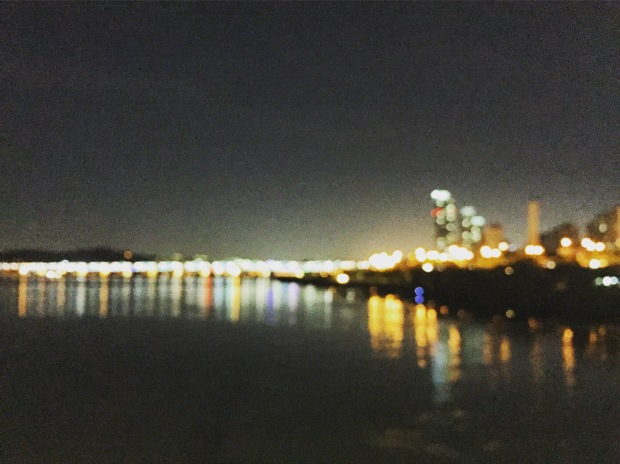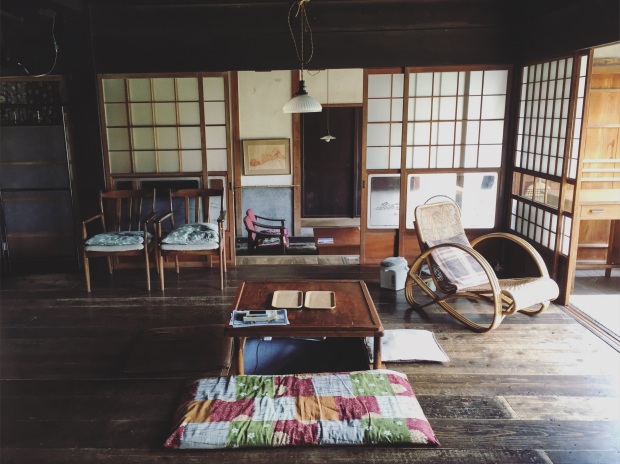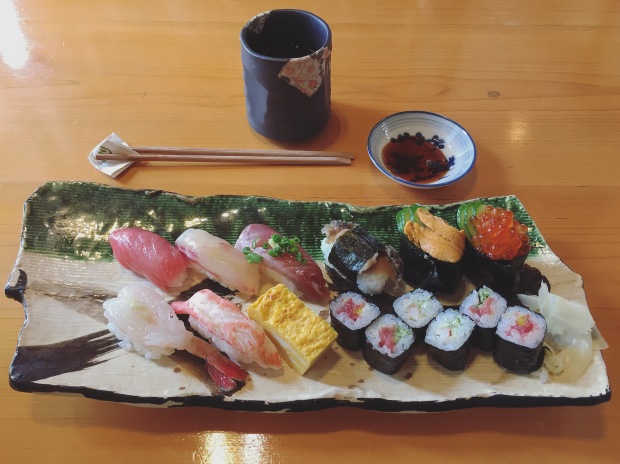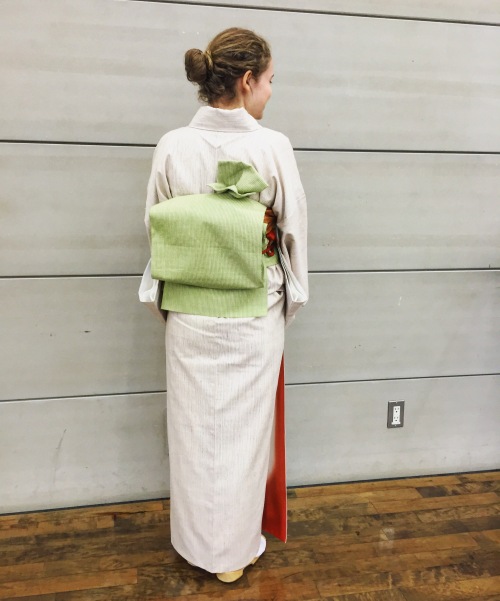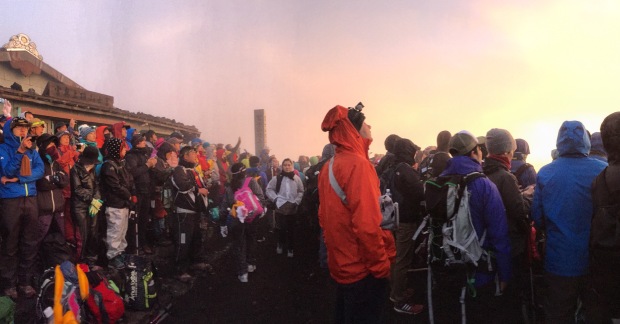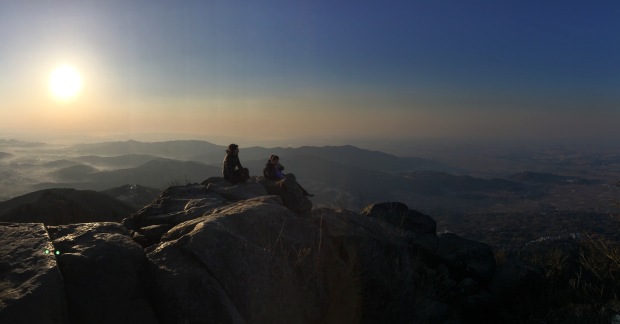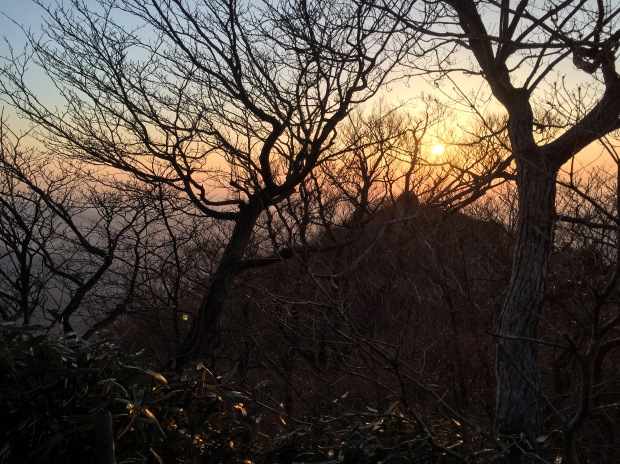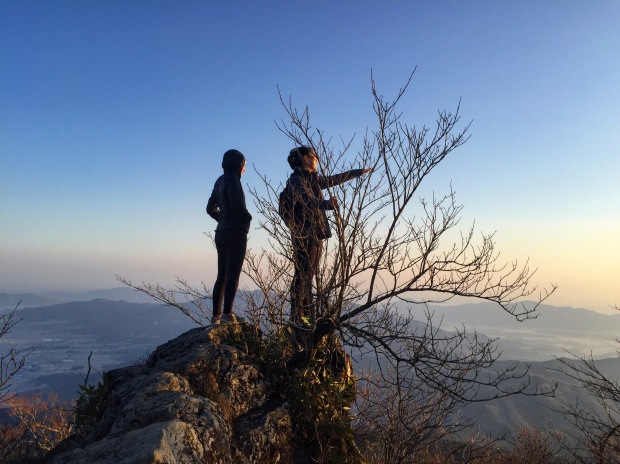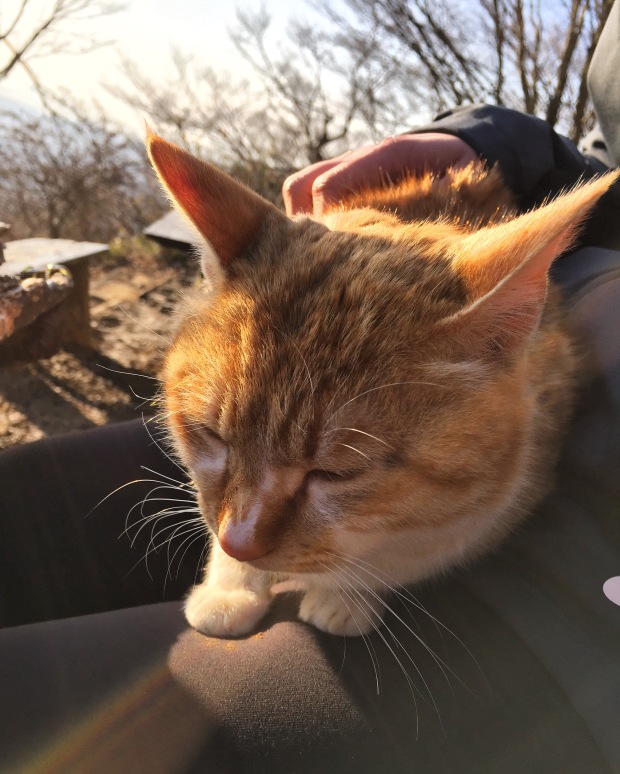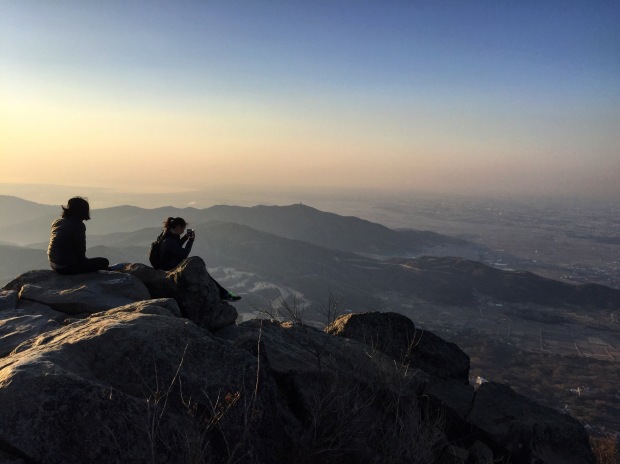Tuesday, May 3rd — in the air

At least we were flying with Song Joong Ki ? 🙂
An adventurous little anecdote: Golden Week in Korea started out a little shaky with a #NotSeoulFunny windstorm that caused our plane to get within 100 meters of the runway of Incheon Airport, shaking violently, and then suddenly reascend to full cruising altitude…. twice.
After two dangerous near-landings, the pilot decided to forget flying into Seoul, and instead announced that the plane was headed for Cheongju International Airport… which, by the way, is TWO HOURS south of Seoul. We landed at 10:30 PM, were allowed off the plane by 11:30, meandered through immigration, and finally boarded buses around 1 AM, bound for Seoul. The buses dropped us off at Seoul Station, but surprisingly the subway wasn’t running at 3 AM. So, imagine 70 people politely fighting over taxis on a near-deserted street at 3 in the morning. Yeah. My friends and I arrived at our AirBnB, exhausted, around 4 AM. Shout out to Jeremy, our awesome host, who stayed up all night to greet us and show us around!
Wednesday, May 4th — DMZ tour & Korean BBQ
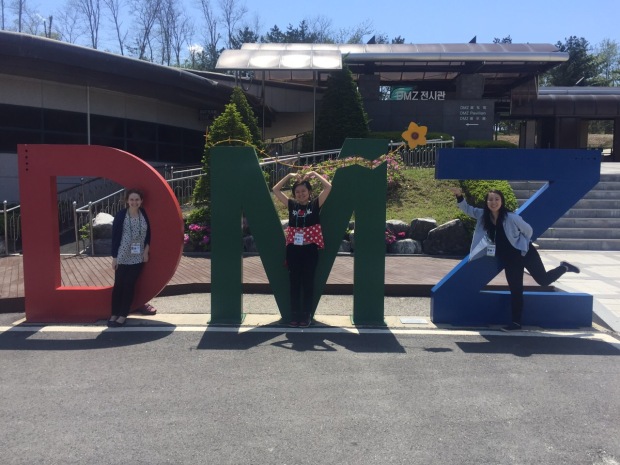

One foot in North Korea… the line of microphones on the table divide the North from the South

South Korean and American soldiers stood in very precise locations near the row of blue buildings (meeting rooms for North and South leaders). North Korean soldiers watched from the far building.
After a brief hour or two of shut-eye, my friends and I conquered the Korean subway and found our way to the start of our Koridoor DMZ Tour. A trip to the Demilitarized Zone was at the top of our list, and we had our passports prepped.
It’s not necessarily a “fun” tour, but it was extremely interesting to be so close to North Korea and to learn about the sometimes bloody (and always rather tense) history of the site. Our guides inside the fence were American soldiers stationed at the DMZ, and at each stop, they would warn us of exactly where we could point our cameras, exactly where we could stand. No waving or pointing in the general direction of North Korea was allowed. We passed through checkpoints ringed in barbed wire and we drove between fields full of buried land mines. From the base of a hilltop guard tower, we gazed at Propaganda Village, a North Korean ghost town with a loudspeaker that blares Kim Jong-un propaganda for hours each day.
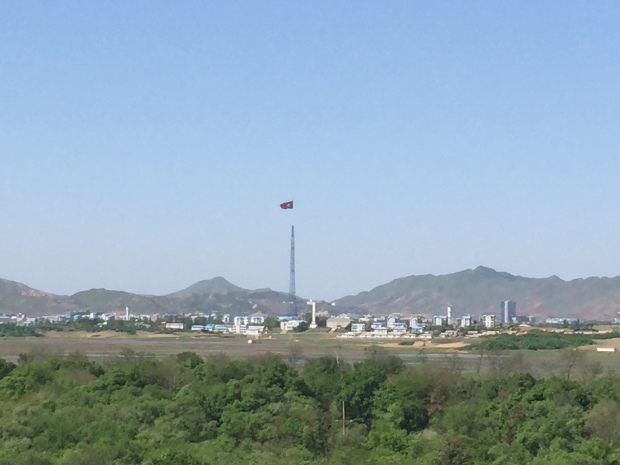
A fun fact: Propaganda Village’s huge flag is the result of a childish competition with the only other village allowed within the DMZ — the (populated) South Korean village of Daeseong-dong. In the 1980s, South Korea built a 98-meter flagpole in Daeseong-dong to proudly fly the South Korean flag… so North Korea retaliated by building this bigger flagpole, which stands at 160 meters. The flag itself weighs nearly 600 pounds!
Another fun fact: time in North Korea runs a half hour behind South Korea. So midnight in South Korea is still only 11:30 PM in North Korea!
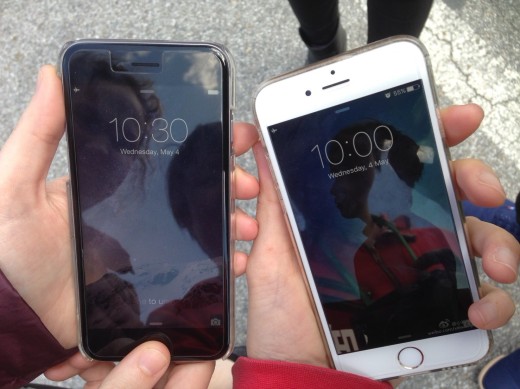
My phone on the left was put in airplane mode when we were still in South Korea, so it’s showing South Korea time, while my friend’s phone on the right is picking up North Korea time!
One of the final stops of our tour was a quick look around the train station built inside the DMZ in the hopes of a united Korea. For me, this was one of the most striking parts of the tour because of the genuine hope that seemed to radiate from the place and from the people. Even our tour guide, a bubbly young South Korean woman, was optimistic that the Koreas would someday be united. The train (which only goes as far north as the DMZ at the moment) was parked silently, patiently, at the platform, and nearby was a huge chunk of the Berlin Wall — a reminder that eventually, some walls do get torn down.
Our Koridoor Tour brought us safely back to Seoul in the late afternoon, and we spent a few hours shopping and cafe-hopping around Myeongdong before ending the evening with some friends (old and new) gathered for classic Korean Barbecue!
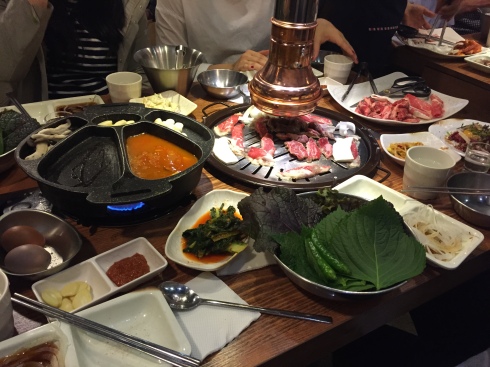
Delicious grilled pork and beef, fried eggs, hot kimchi soup, spicy bean sprouts, sauteed spinach, roasted garlic, bottles of soju, and even a plate of Yukhoe (raw ground beef topped with raw egg). Believe it or not, the raw beef wasn’t so bad… I went back for a small second helping!
Thursday, May 5th — Hiking Bukhansan & a Jimjilbang
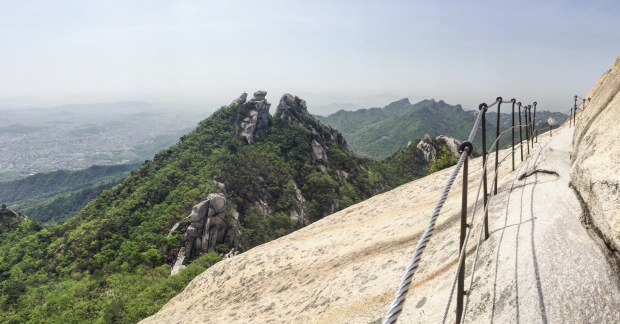
Personally, this was probably my favorite day of the whole trip (as well as my only contribution to our itinerary). Due to the sheer amount of photos I have from this day, I’ve decided to write an entirely separate post about hiking Bukhansan, so look forward to that!
Friday, May 6th — Palaces, Night Markets, and… Acupuncture?
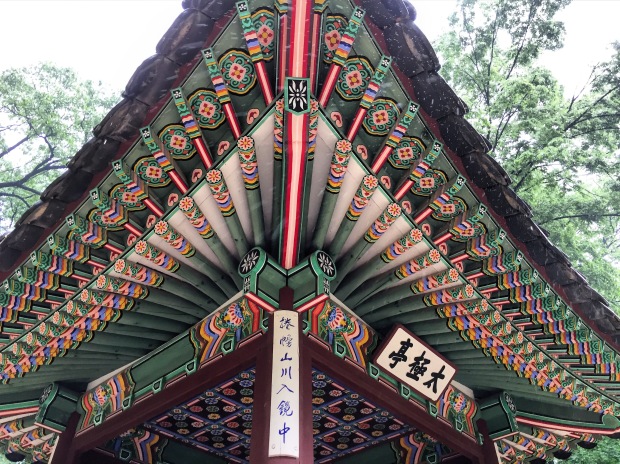
I love seeing cities in the rain. They say that Paris is most beautiful in the rain (and I can personally vouch for that), but in gloomy weather, Paris may have found a rival in Seoul…
Our first stop of the day was Changdeokgung Palace, which is known for it’s Secret Garden. It’s not the most famous palace in Seoul, but it’s less crowded and perhaps a little more special. We wandered around the grounds for a few hours, waiting for the English tour of the Secret Garden to begin, and we stumbled upon a special event: inside one of the buildings, you could meet with a palace doctor for a quick appointment, all for free!
We thought, “Why not?” and so we signed up. I honestly thought it was a joke until I was seated on a sheltered porch, across the table from a nurse dressed in traditional Korean hanbok, and was asked about my symptoms. I’ve always had back pain, so I mentioned that, and she scribbled down my age and my aches and ushered me inside to wait for the doctor.
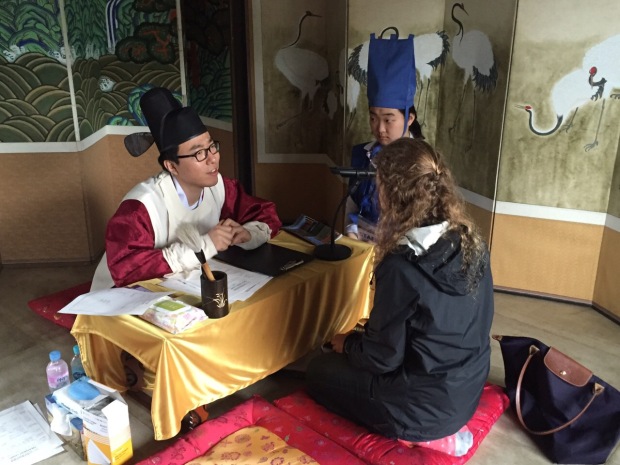
Which is how I found myself having an actual check-up from a random Korean doctor, who (after a few more questions and a quick check of my pulse) wrote me a prescription for acupuncture, effective immediately! I was led into the next room, told to lay down on a little mattress, and a nurse stuck four needles into my legs!
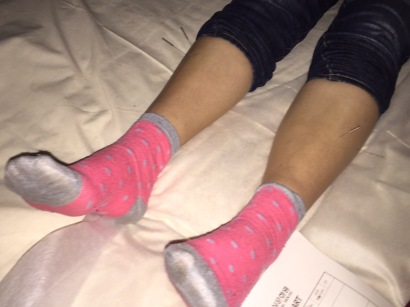
Yeah, so my first foray with acupuncture was in a Korean palace! It was actually quite lovely, lying there chatting with the nurse and staring up at the intricately painted ceiling, the smell of rain and time and history surrounding me. I did feel more relaxed when it was all done, too.
One of my friends, J, was also prescribed acupuncture, while S opted out of her treatment (and instead got the royal photographer to snap photos of her meeting with the doctor!).
A quick tea break later, it was time for the Secret Garden tour. It’s basically a 2-hour walking tour of the royal gardens, with quite a bit of history thrown in. Generally the gardens are not open to visitors aside from guided tours (which are rather strict in moving along as a group) but that Friday was a rare occasion where they allowed anyone to wander away from the guide and just relax in one of the numerous pavilions. I saw visitors lounging on cushions on the covered porches with books in their laps, lazily glancing up to gaze across the rain-rippled lakes, and I imagined princes from long ago doing the same, waiting for someone to bring them a pot of steaming tea before diving back into their books on rainy days. If we hadn’t had such a crammed itinerary, I would’ve begged my friends an hour to do the same, it was such a peaceful scene.
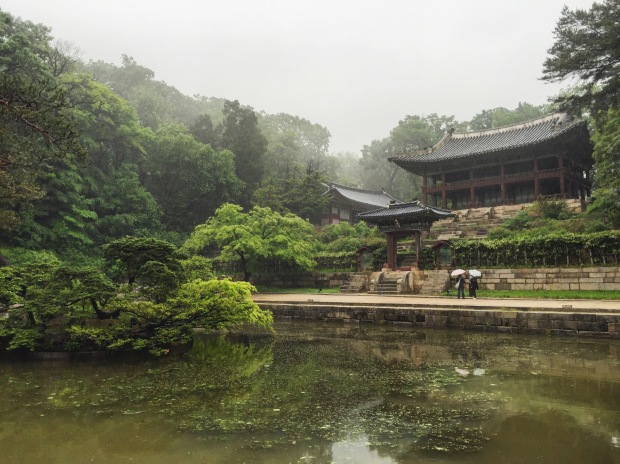
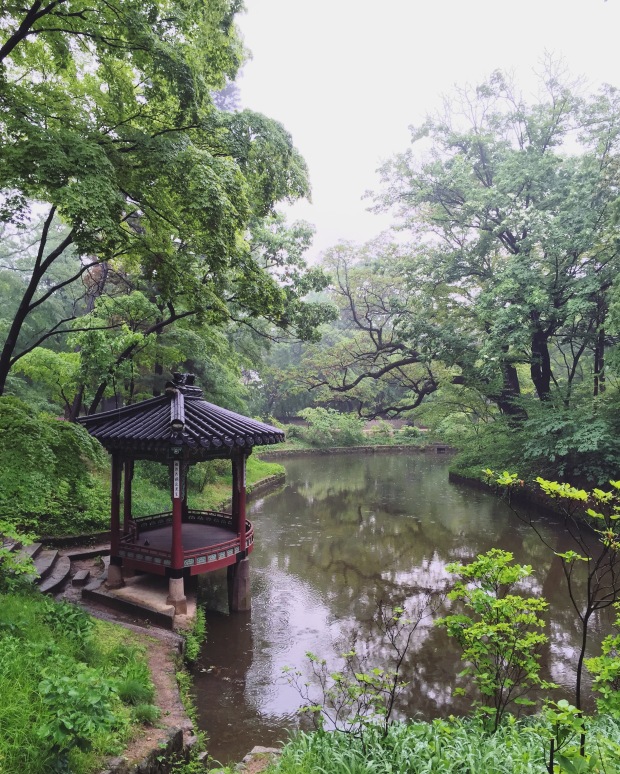
After Changdeokgung, we made a quick detour over to Gyeongbokgung, the largest and most famous of Seoul’s five palaces. While admittedly impressive due to its sheer size, I honestly didn’t think Gyeongbokgung was any more ornate than Changeokgung. It was just… bigger. It was also much more crowded. Despite all of this, I do think it was worth the visit, and I wish we could’ve seen the changing of the guards at the main palace gate (which was cancelled that day due to poor weather). If I ever visit Seoul again, I’ll definitely spend more time at Gyeongbokgung.
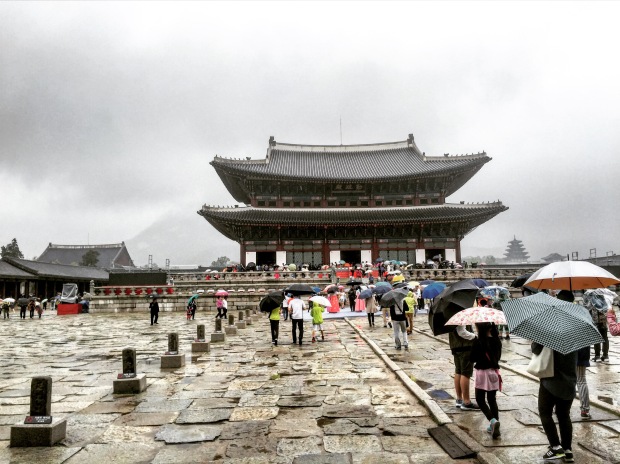
We spent our late afternoon shopping (because by that point, we were rather tired of dodging raindrops… and of course, Seoul is famous for its shopping). And in the evening, we decided to check out the night markets.
Seoul’s street food is scene is rather insane, and Seoul’s night markets are just a huge collection of home-cooked street food at crowded little booths. In our experience, the women who run the little stalls will squeeze as many customers as possible onto their benches and they might chide you a little if you aren’t eating fast enough… don’t go expecting a relaxing dining environment. But it was fast-paced and alive with all the new foods and the spices, and I loved it.
My friends and I feasted on kimbap (korean sushi minus the fish), tteokbokki (rice cakes smothered in spicy red pepper sauce), and japchae (glass noodles). We finished it all off with some fresh strawberry smoothies to help with all the spiciness!
Saturday, May 7th — War Museums and River Nights

For our last full day, we headed to the War Memorial (and Museum) of Korea for a little history. While I could claim that everything we did in Seoul was a highlight, this museum stood apart from the rest. It’s by far one of the best museums I’ve ever been to — high-tech, interactive, with a staggering amount of information and a very chilling memorial hall.
If anyone is ever planning on visiting Seoul, I can’t recommend this museum enough. While it’s fun to do all the touristy stuff, I think it’s equally important to learn at least a little about the country you are visiting. In South Korea’s case, it has a very sad, bloody history and an amazing amount of hope for the future. I could’ve spent the whole day here and not seen everything.
Outside the museum, there are huge statues and memorials along with some tanks and fighter jets. The one that caused me to tear up, though, was this one:
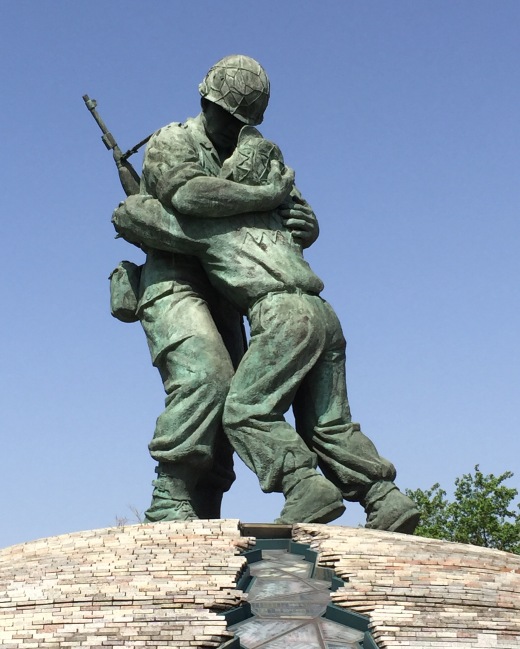
It’s two brothers — a South Korean general, and his younger brother, a North Korean soldier, meeting and embracing on the battlefield.
We eventually tore ourselves away the museum, and we hit up the neighborhood of Gangnam , for some snacks (including Milk Cow’s honeycomb ice cream!) and some serious skincare shopping. Although we poked our heads into all the famous skincare stores, sampling and comparing, I ended up walking away with a bag full of Nature Republic products.
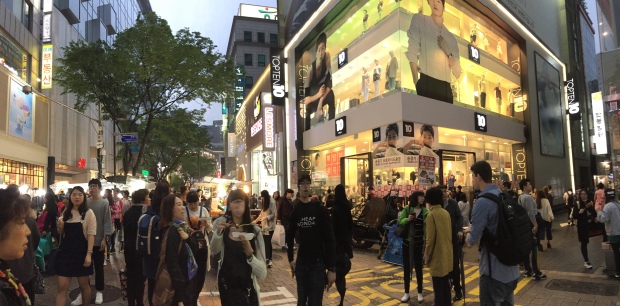
And for our final night in Seoul, we bought some delicious fried chicken and headed to the banks of the Han river. Just like in the K-dramas. We sat and we ate and we talked… then we dragged our tired legs back to our AirBnB for the last time.
Serious props to anyone who made it to the end of this recounting! Goodnight!
